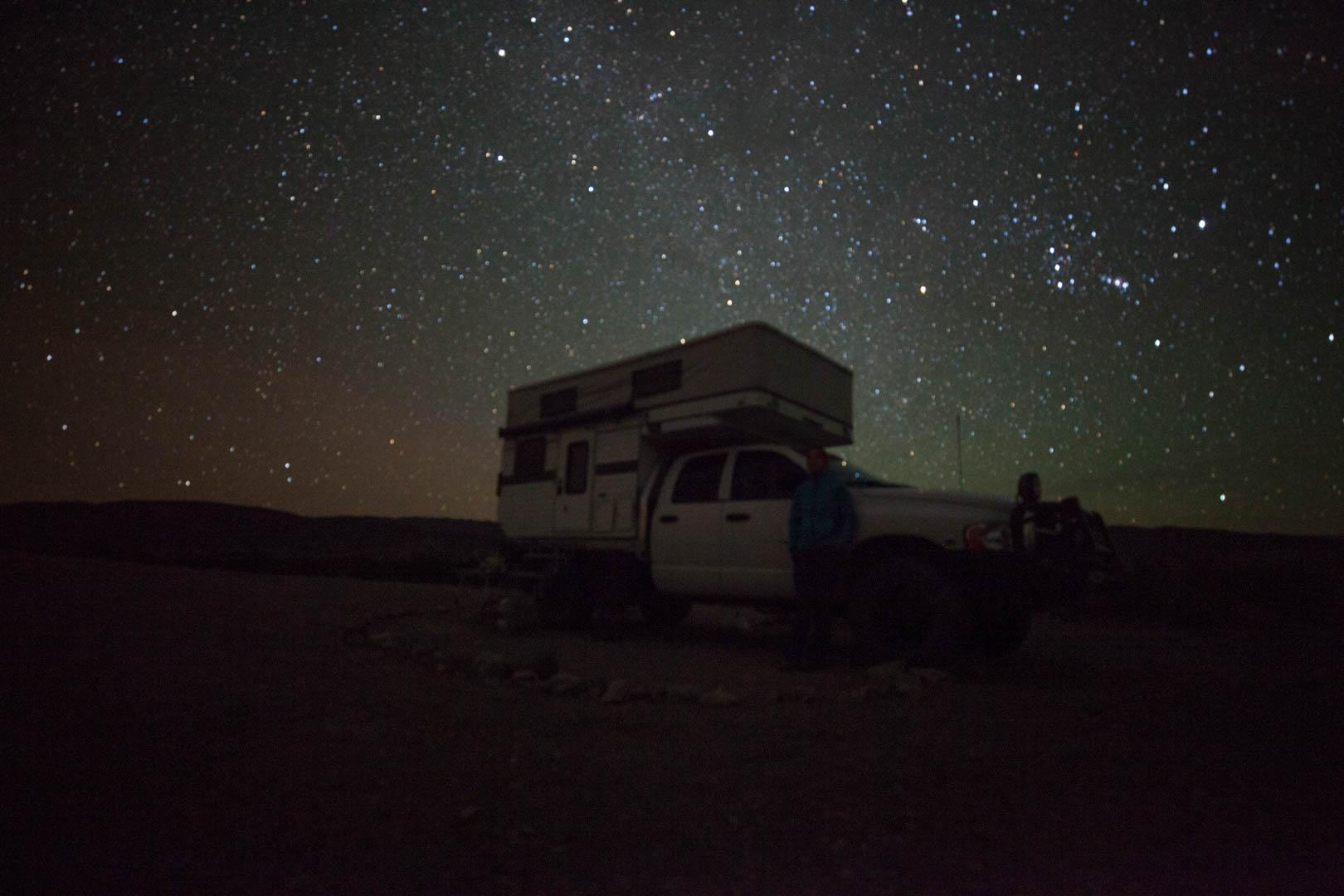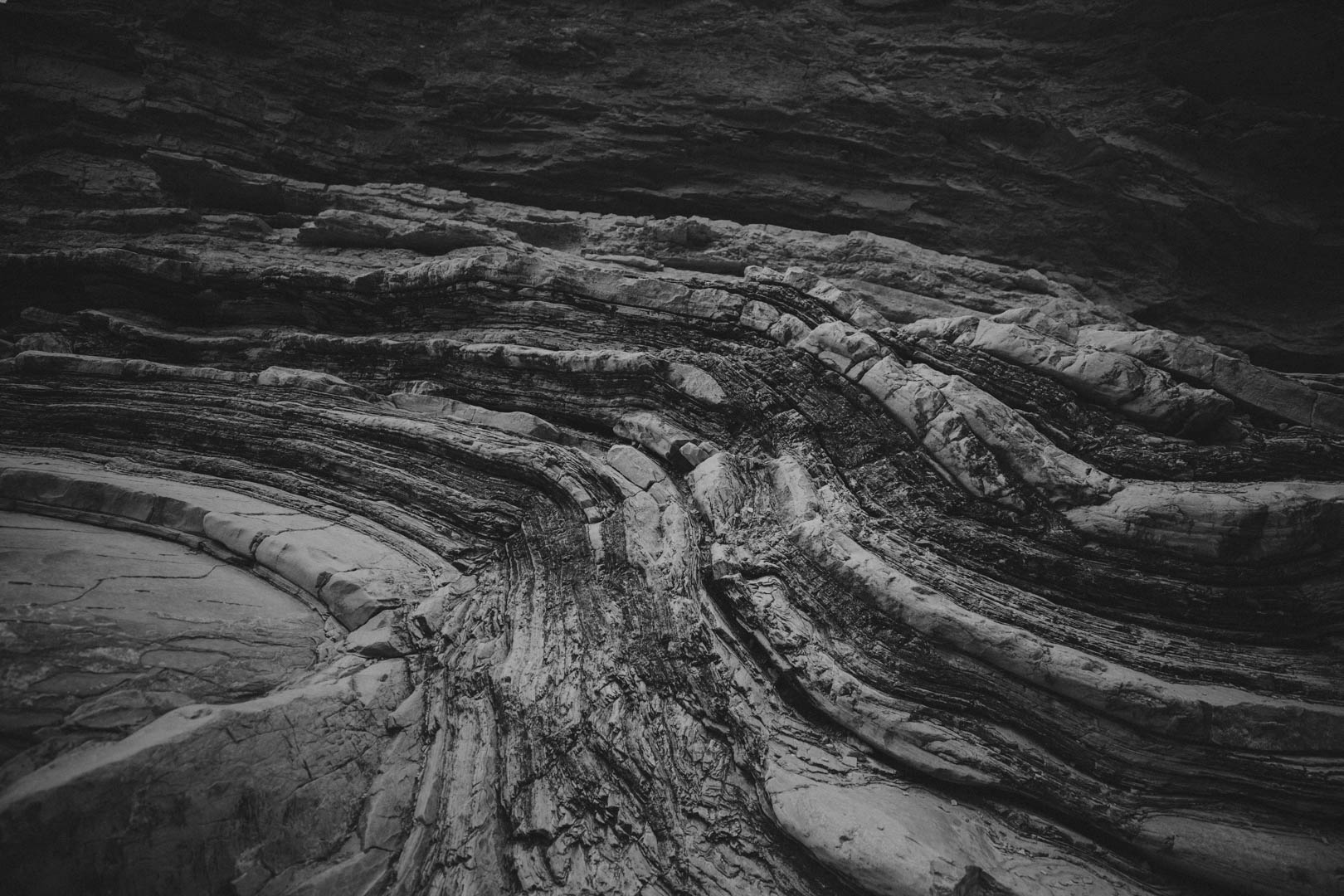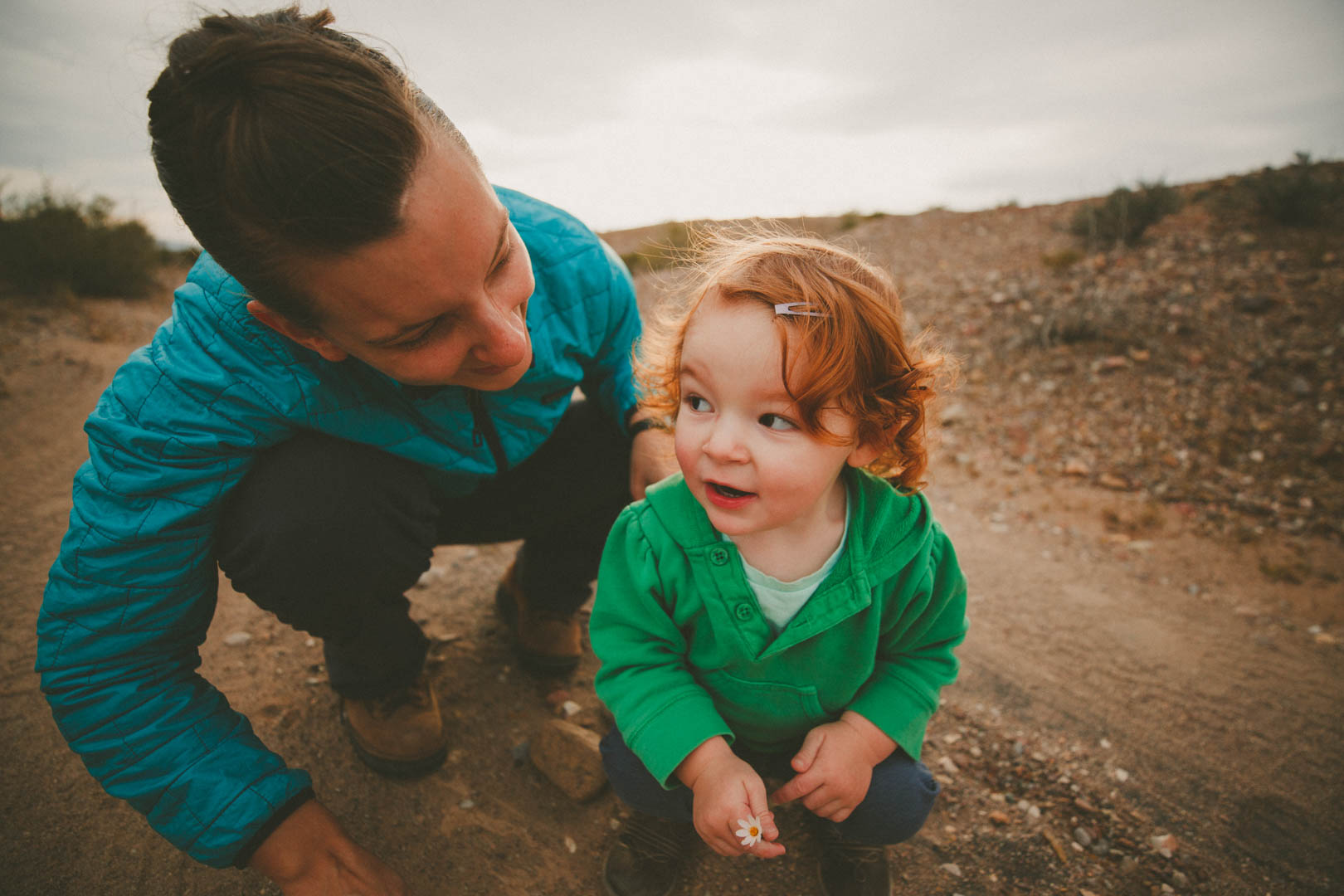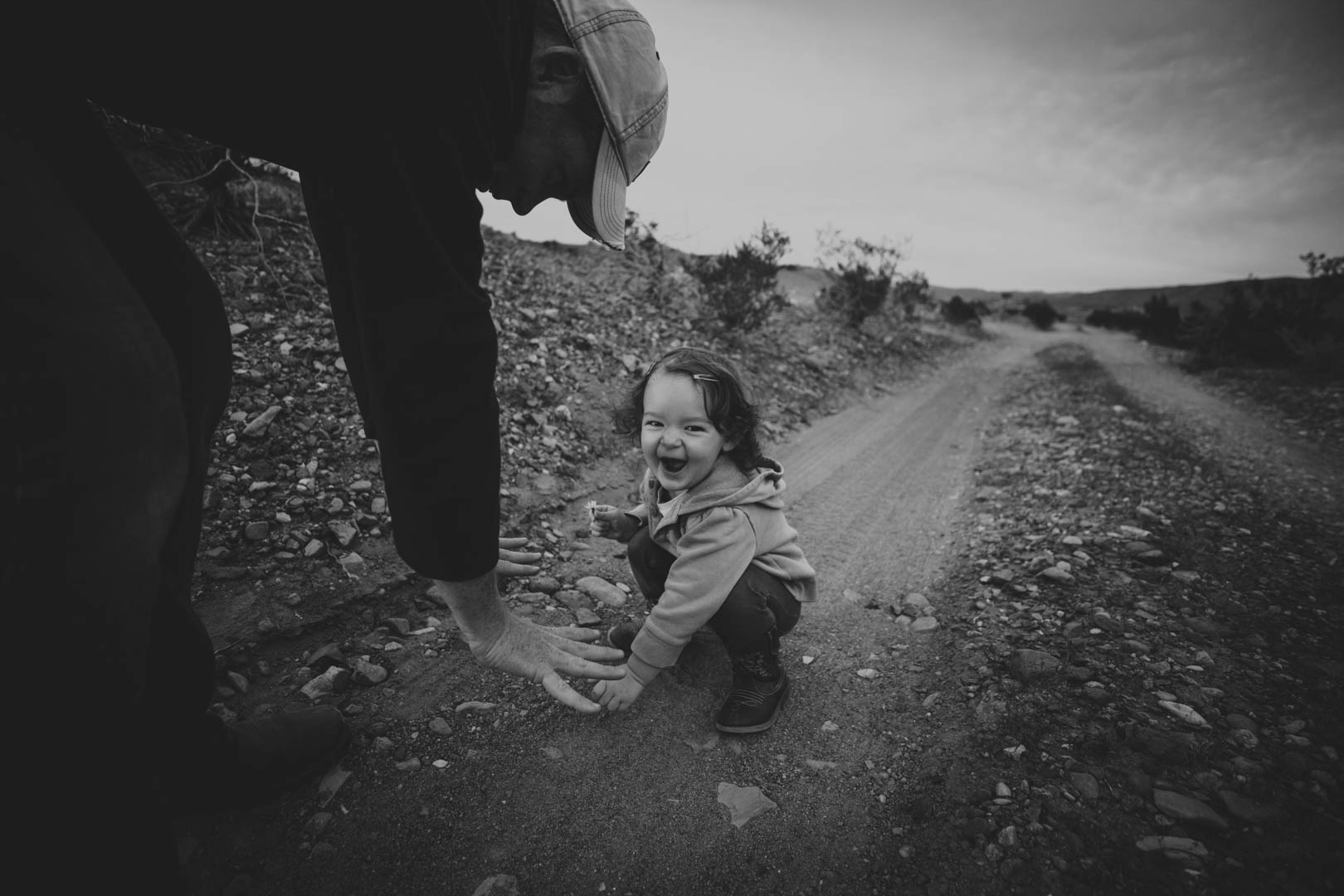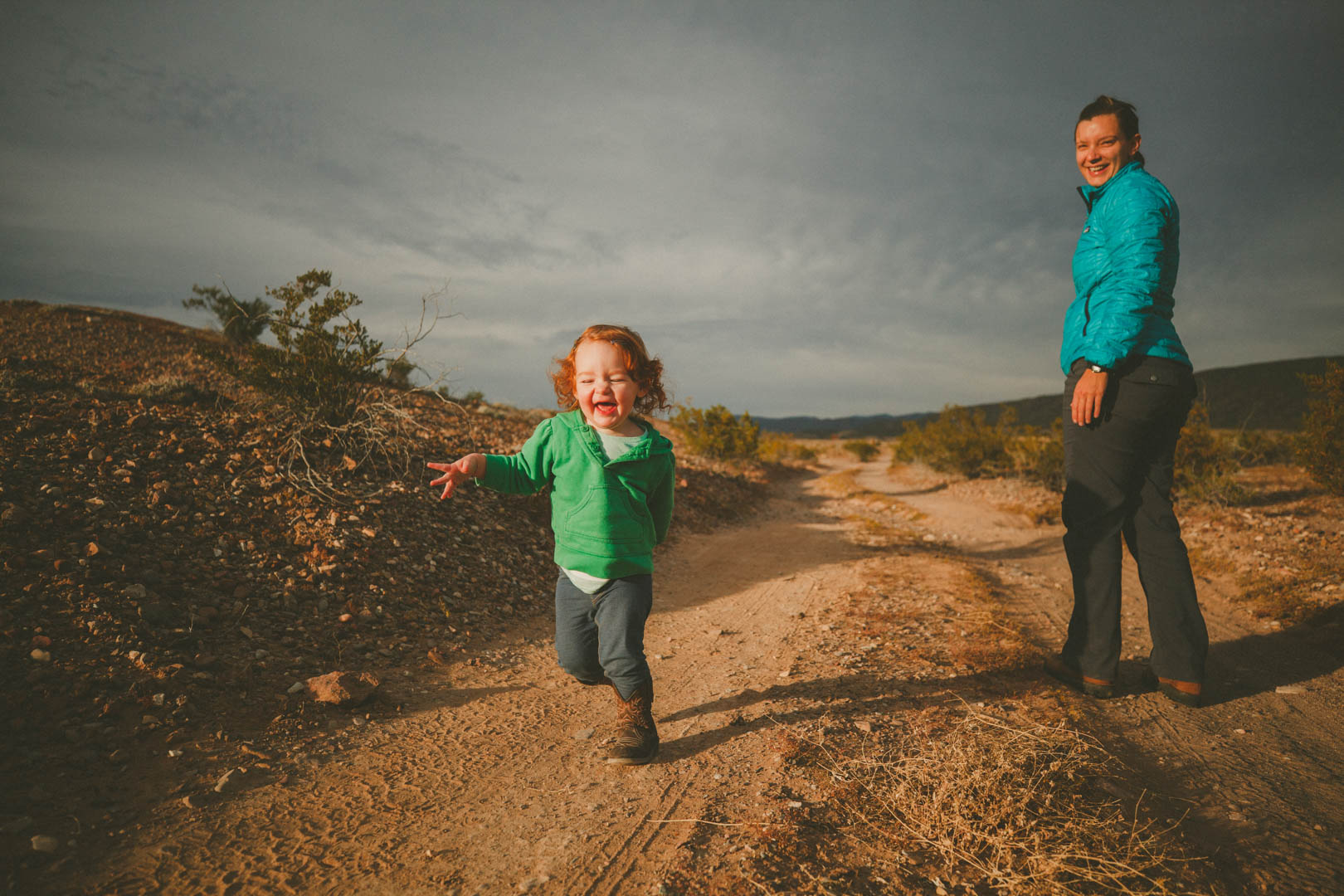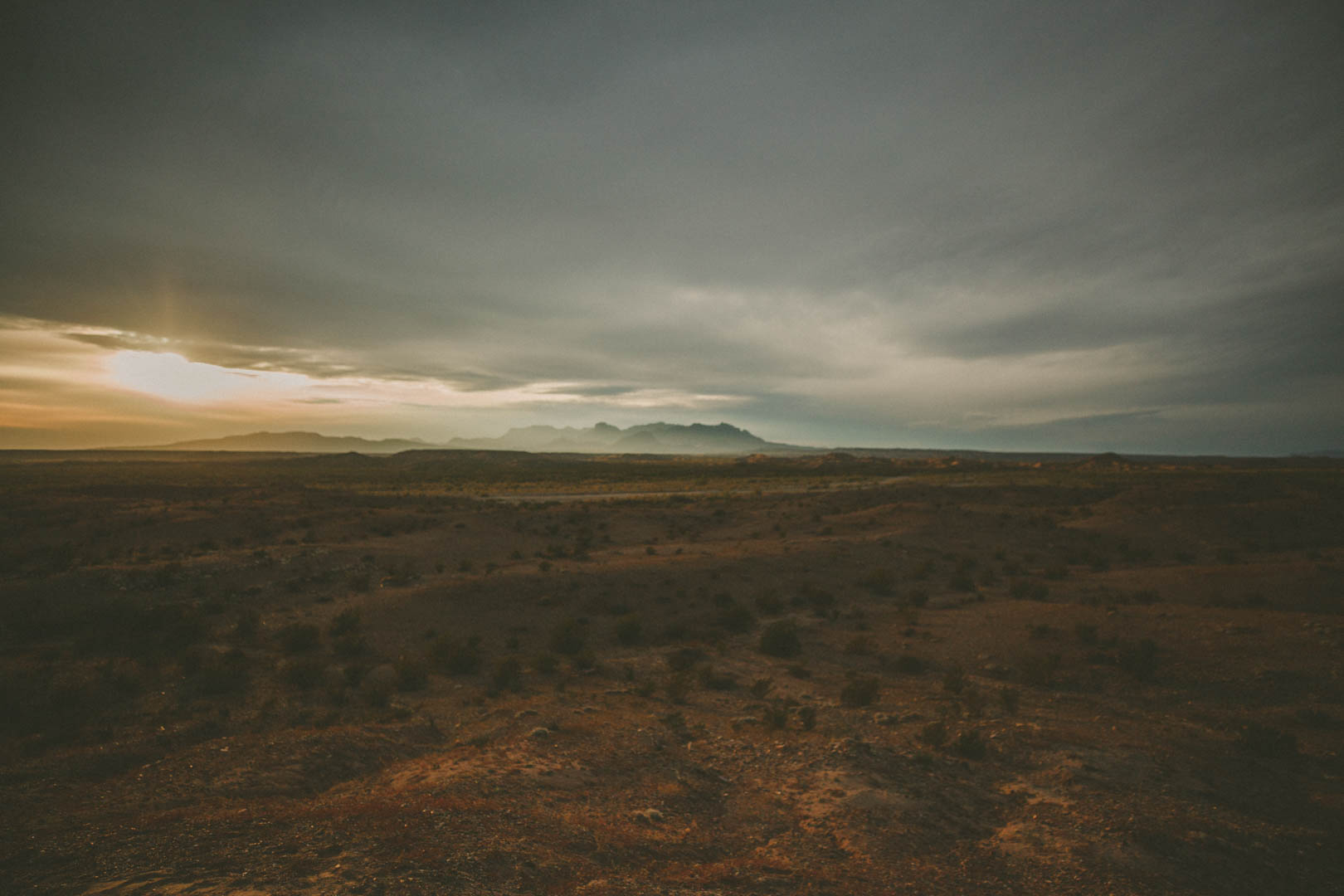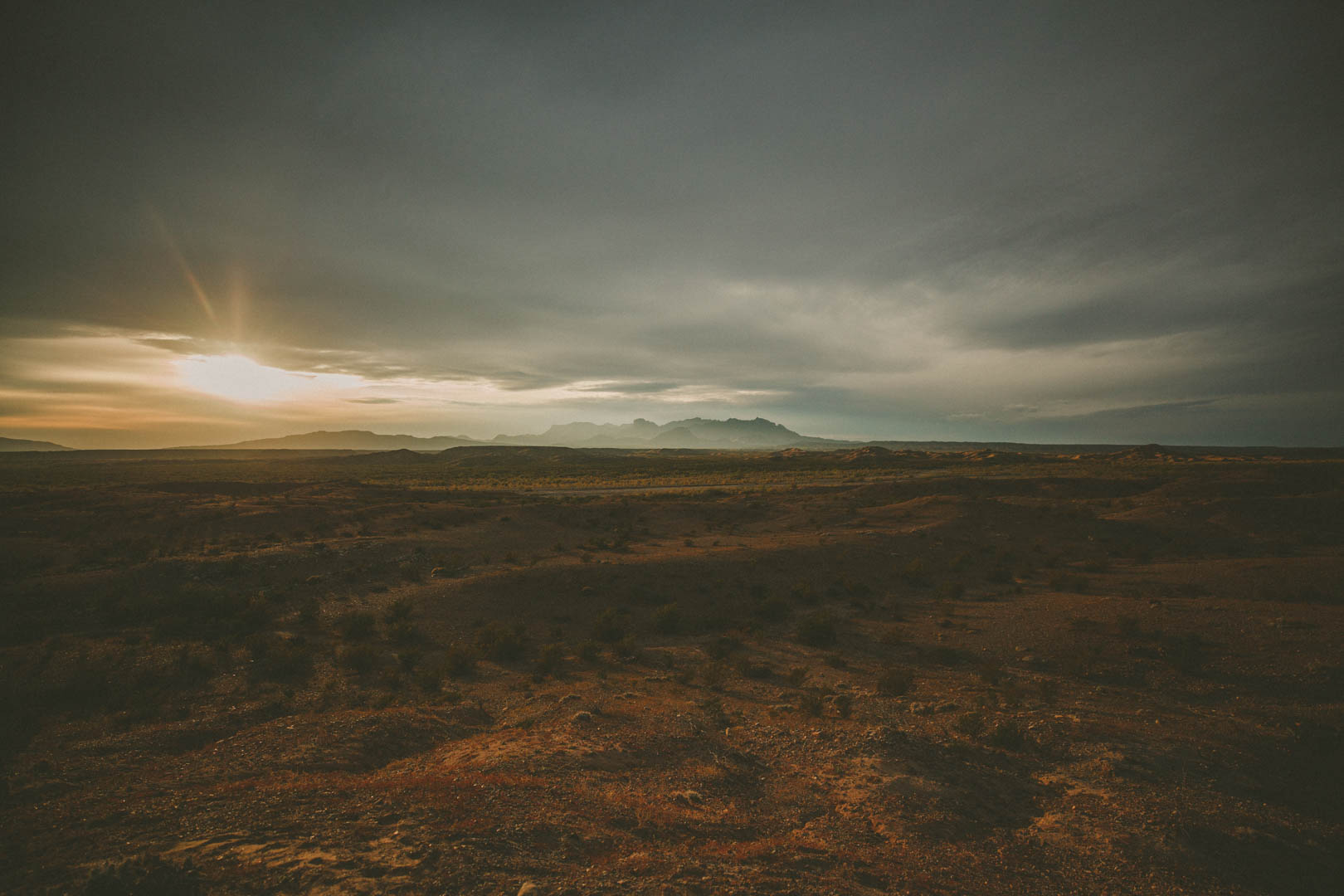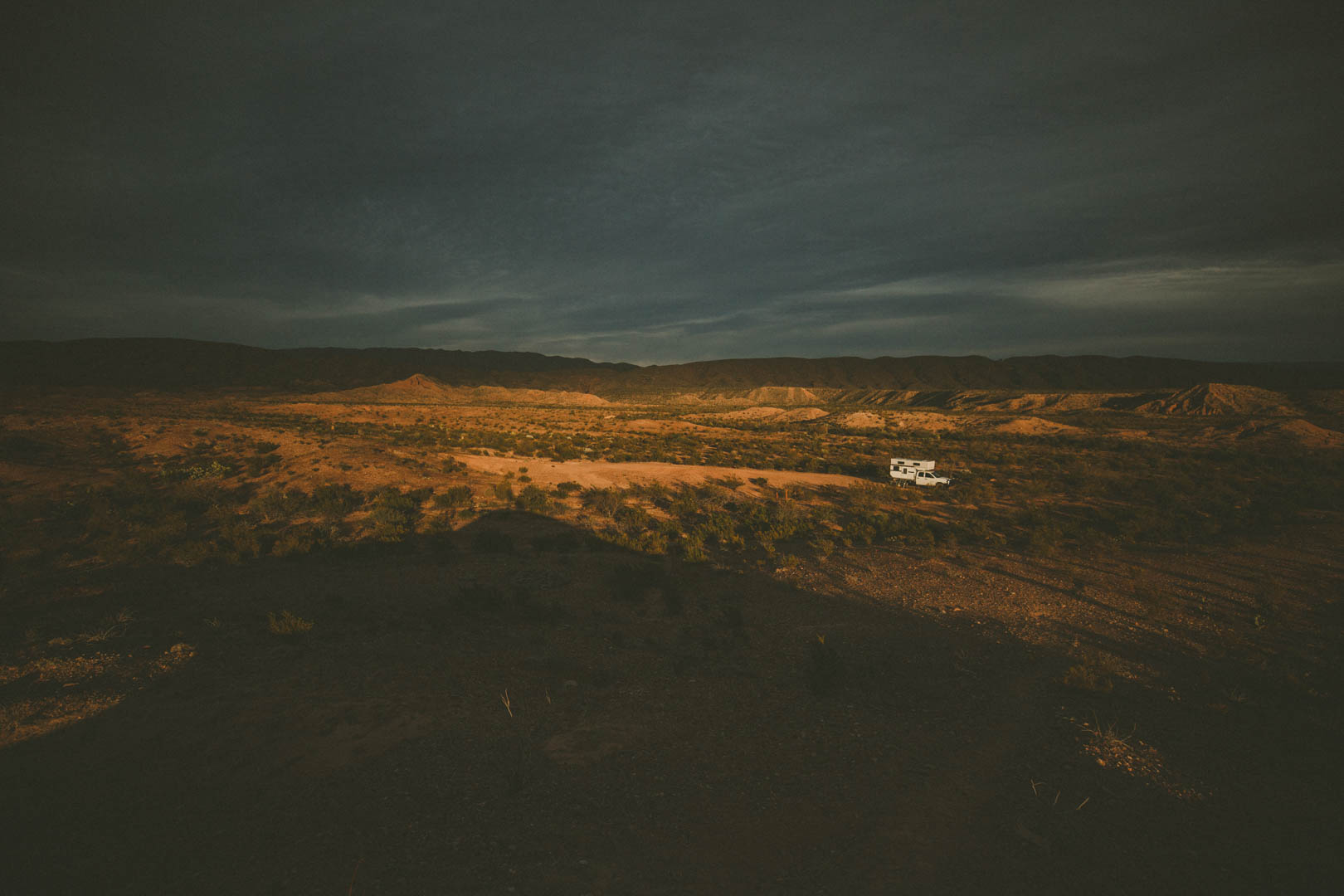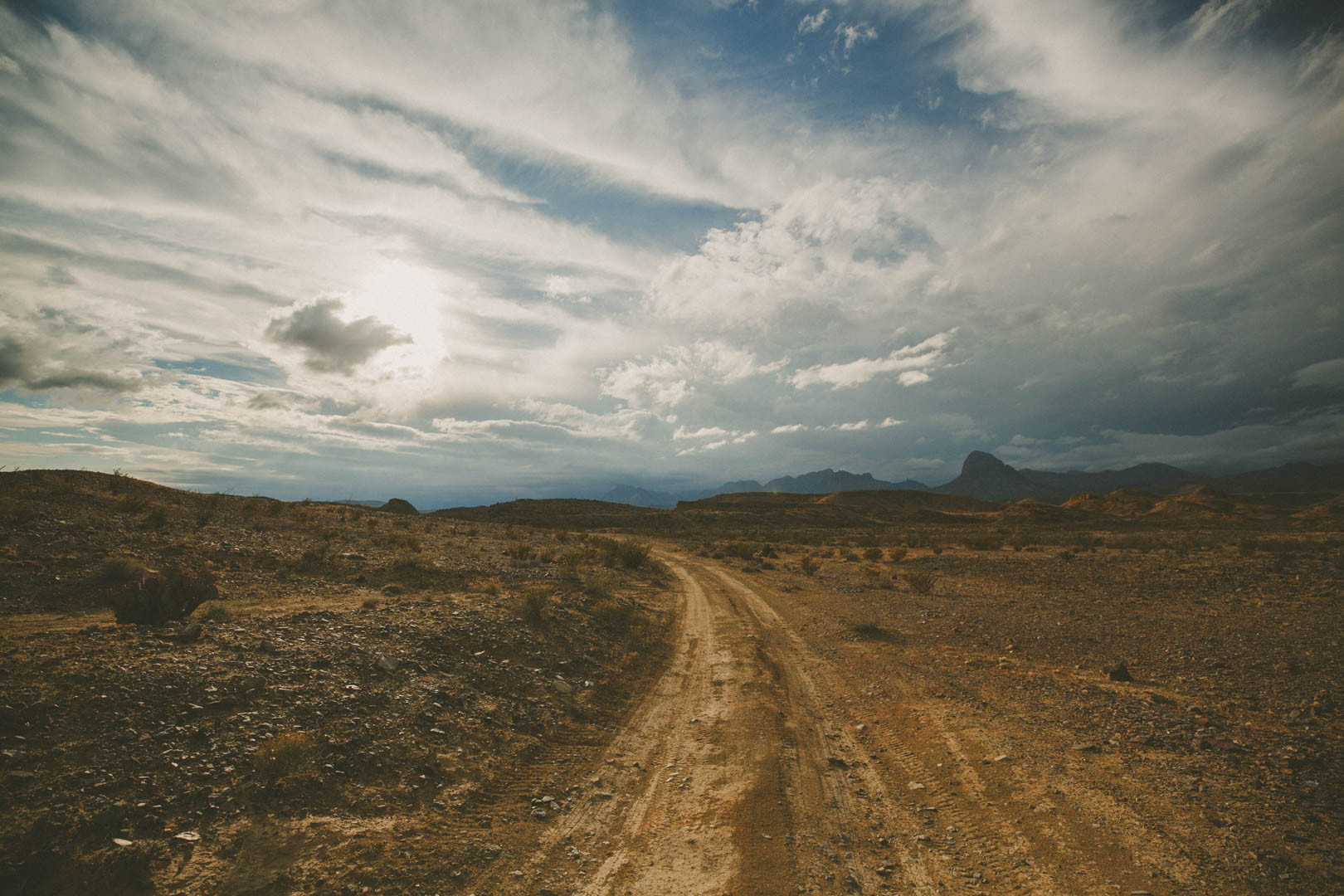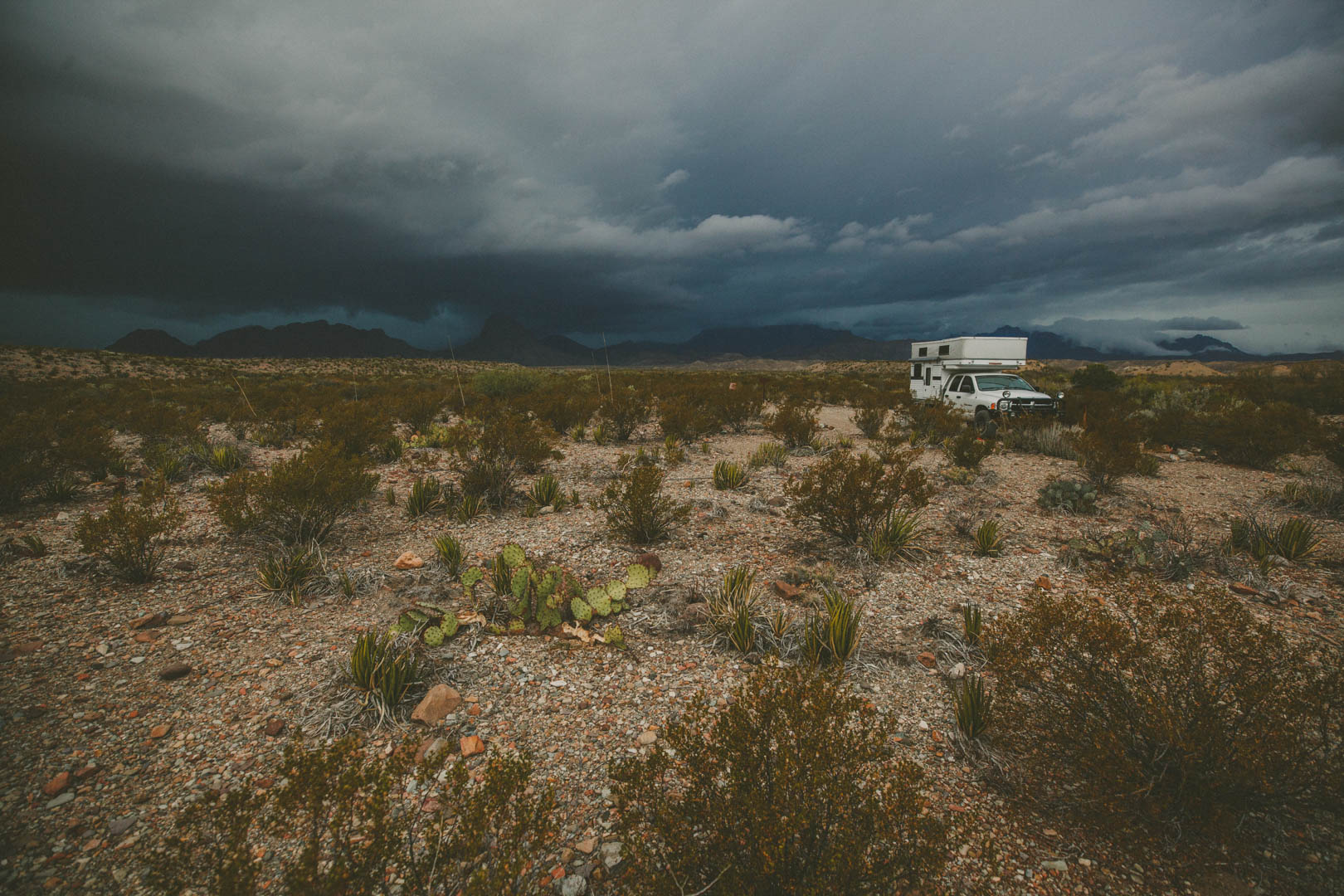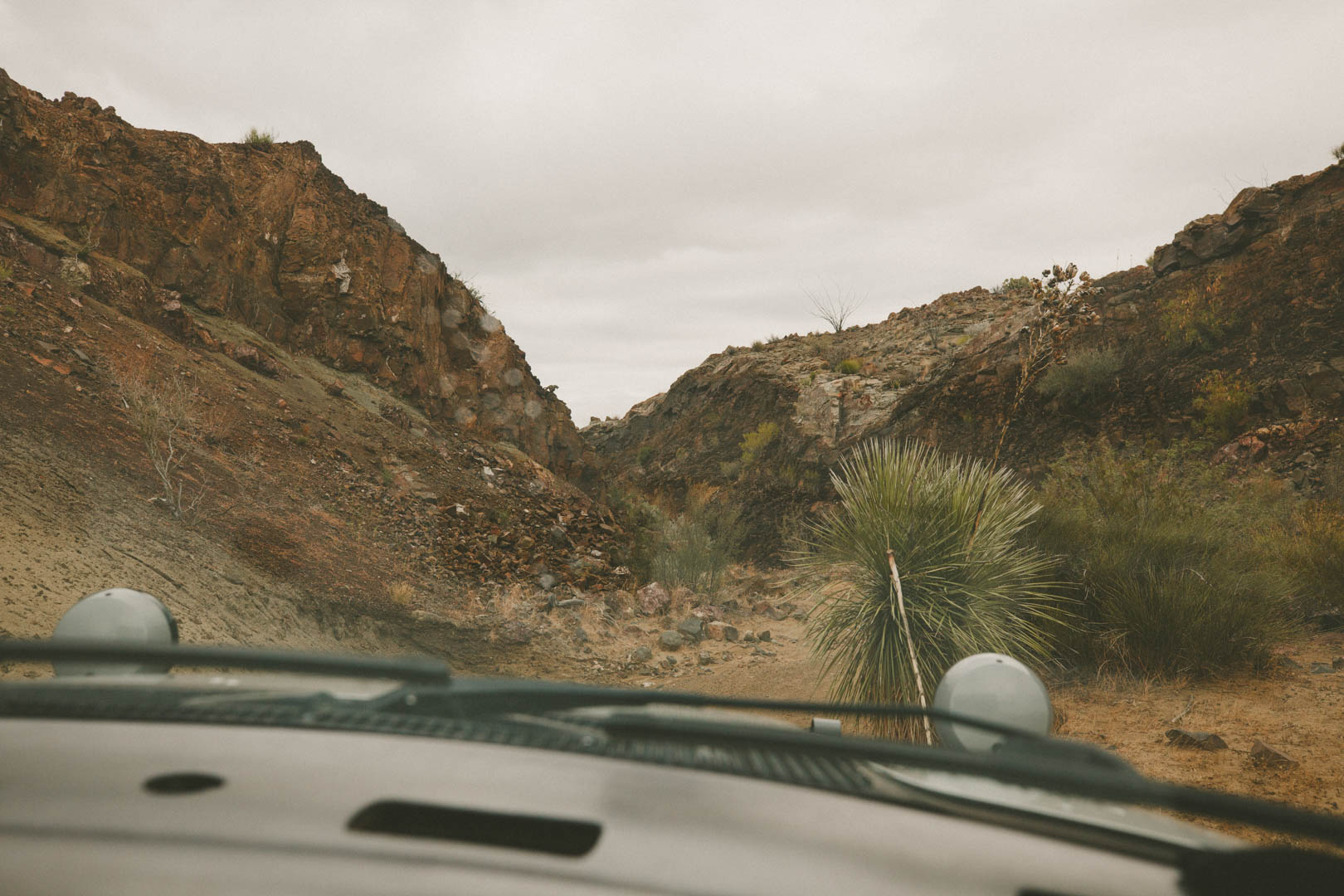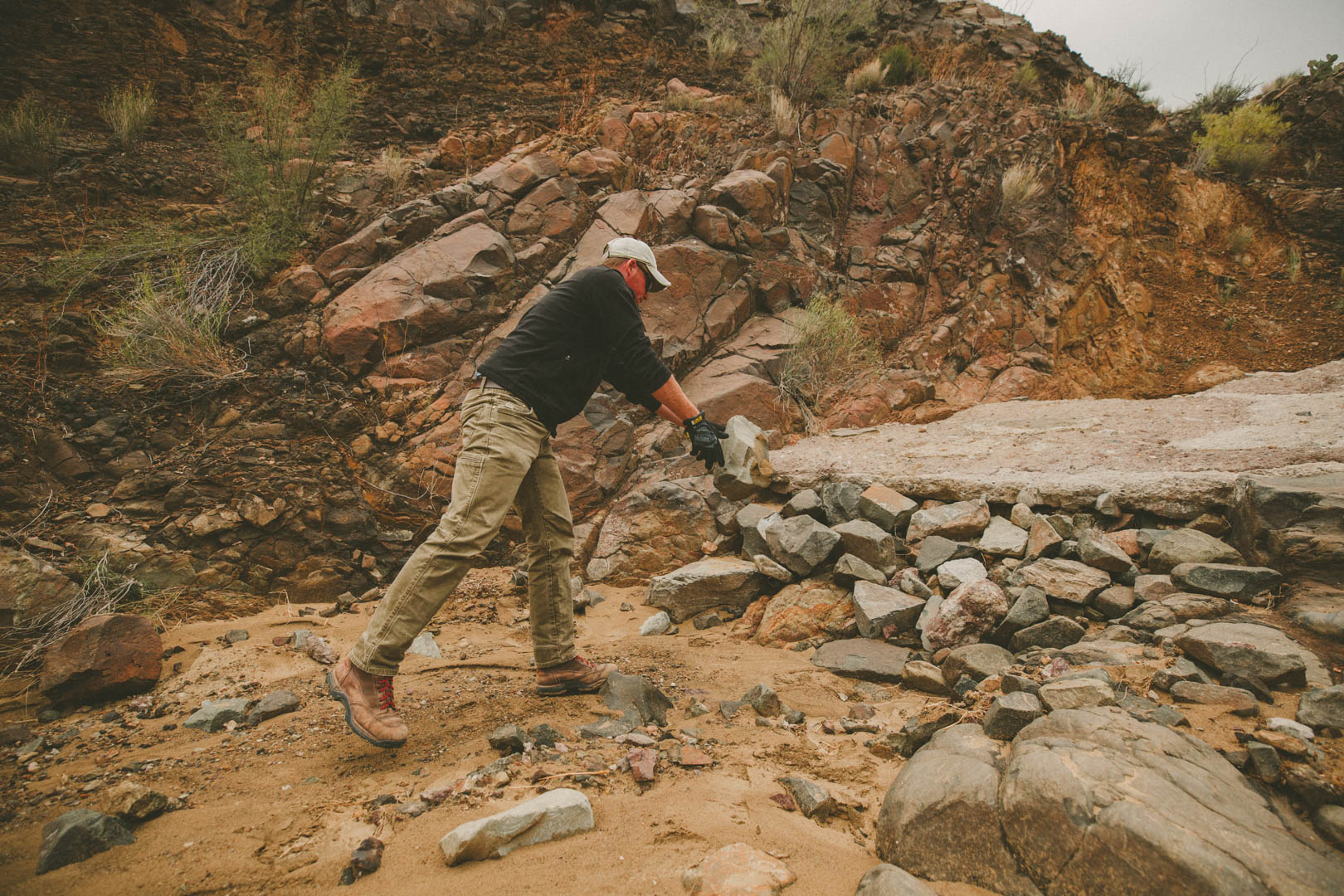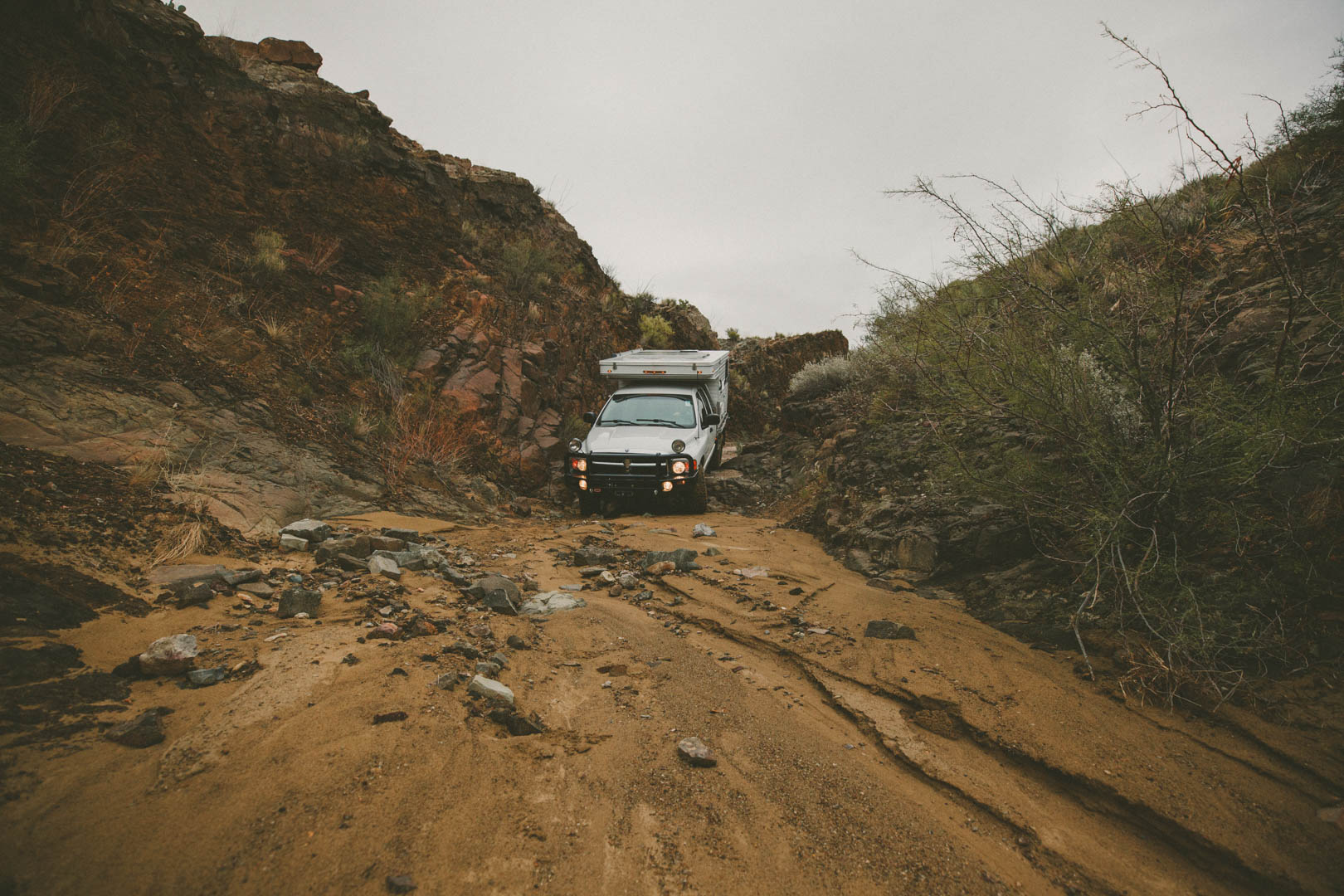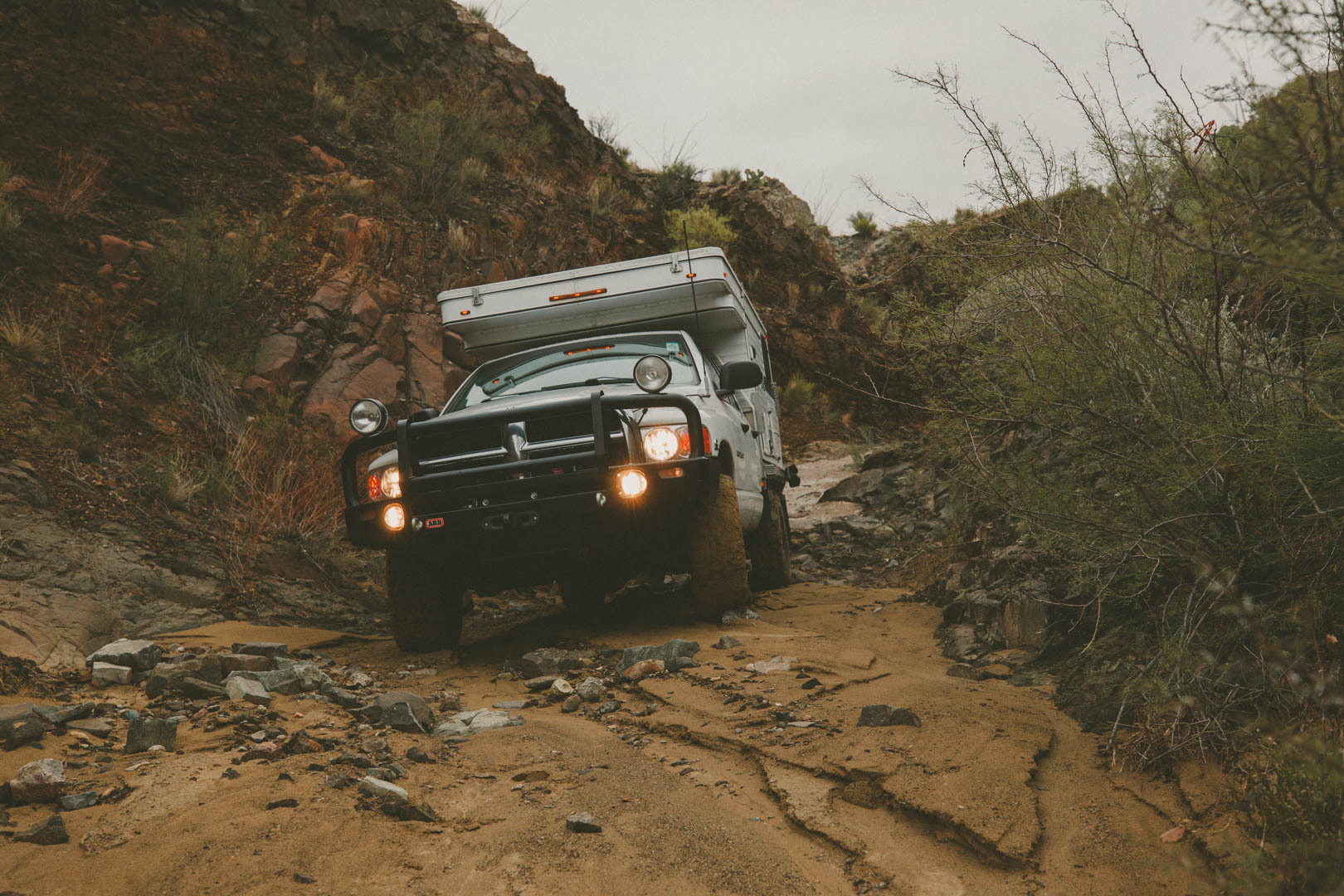It’s a long drive from Marathon to Big Bend. Forty empty miles through the northern edge of the Chihuahuan Desert. The two-lane is a scrawl in the scrub and sand, barbed wire and fallen telegraph lines. We’re glad to be out of the mountains. Glad to put the New Mexico snow behind us, but Beth’s quiet as we drive. So am I. I wonder if we’ll love far west Texas the way we did when we came through last April. If it will ignite our hearts.
It’s the busy season, for one. The winter months make the park kind. The temperatures turn mild, the sun quits its raking across the broken hills, and the long nights show off the galaxy above clearer than anywhere else in the continental United States. It’s the busiest time of year for the least-visited National Park. We’re worried the place will be crowded, that we’ll have a hard time finding a back-country site.
The place is different now. It’s almost cold. The sky’s overcast, and the low clouds push across the horizon on a sharp wind. We’re different, too. The year sprawled out before us the last time we were here. There were months of possibility ahead, and Big Bend was a gift. It was a glimpse at everything the vast west had to offer us. The beauty and the serenity of it. How the place insists you take breath. Fill your lungs.
Now our year’s coming to a close. Our short winter days have a finality about them, and Beth and I are at each other more than we have been since we set off. Stressed about what next year will bring. Worried how long we can keep to the road without a paycheck.
And there’s the truck, too. We’ve covered 26,000 miles this year, all with basic maintenance, and the machine’s wearing thin. A spectrum of electrical quirks have borne down on us, first a few lights on the dash, then a scattering of power option failures. The Dodge still as faithful as ever, starting and lugging us along for days on end, but the possibility of a larger issue looms in my mind.
We spend a few nights on the park’s eastern edge, camped off of Old Ore Road, and while we see a few other rigs here and there, the park is mostly ours. I’d forgotten how quiet is down here. How you can hear it, the noise of nothing ringing in your ears. I take an afternoon to hike Ernst Tinaja, a narrow limestone canyon swirled with the violence that made this place. Like everything else, it’s beautiful, even under a gray blanket sky.
There are early dinners and sunsets like wildfires, the air dusted with constant wind and lit with the vanishing sun. We walk with our daughter, up and down the spur road that leads to our camp. It feels like the Earth that was, untouched and ragged, but the truth is we’re sleeping on the bones of an old compound. White stone foundations dot the desert. Bits of 100-year-old glass and ceramic catch the sun and shine in the sand. Old tin cans lie in piles. This is a place that forgets nothing.
The weather calls for rain, and we take a day to roll deeper into the park. River Road’s been graded since the last time we were here, and it’s easy going to our second camp, on past the old mercury mine and against the base of the Chisos Mountains. It’s amazing how far an hour will take you down here. How the land can’t help but change its face from one minute to the next, switching from a flat, scorched pan to rolling hills and back again. The wind’s up by the time we make Elephant Tusk. Brooding clouds come tumbling over the mountains to our west, and for the first time, we can smell the rain.
The desert knows what’s coming. Every dry bush and flowering cactus opens itself to the coming storm, and the air is sweet with the perfume of it. Jasmine and sage, mesquite and ocotillo. It’s so wonderful that I can’t stand to be inside. Instead, I take a hike. Walk a bit of Black Gap Road.
It’s unmaintained, according to the map. Every ranger I’ve spoken to has cautioned me against driving the Dodge from one end to the other. There are a number of dry washes with steep banks. Plenty of off-kilter ridge climbs. And worse, one serious step. Depending on the time of year, there can be a three-foot drop to contend with. I want to see it for myself. Put eyes on the thing and do the mental math required to figure out whether the truck can handle it.
Our machine isn’t made to wheel, and I’ve done well to avoid putting it in compromising situations this year, but I know that a careful line can take you far, and I want to see that side of the park. It’s our wheelbase that worries me most. That and the weight. With nearly 12,000 pounds sitting on the tires and more than 13 feet between each wheel, the truck’s begging to be high-centered. And worse, it could be days before anyone comes along to help us out.
I keep one eye on the sky and another on the road as I walk. It’s chunky in places, big, skull-sized rocks littering the two-track here and there, but it’s passable. When I finally make the step, there are enough rocks stacked to make it serviceable, even for long-legged school bus like ours.
I make it back to the truck as the first fat drops start falling, and by the time I’m inside, the rain’s going in earnest. Our site’s close to the road, and we watch as a couple of stock Wranglers head for Black Gap in the middle of the storm. I think about all the dry washes out there, about how quickly the desert will fill them with water, and hope they get where they’re going.
The wind picks up, and so does the rain. We’re in the middle of a pounding thunderstorm, the camper’s canvas sides billowing and popping as the pressure changes outside. Beth and I have always loved thunderstorms. They remind us of long summer afternoons, of our bodies slick with warm rain and the water sweet on our lips. We couldn’t have guessed we’d find one last brawler of a storm this late in the year, so close to Christmas.
Kiddo looks worried at first. The rain’s at a shout, pounding on the roof’s thin aluminum, but we clap at each flash, and laugh as the thunder booms its way down the mountainsides. Soon enough, she’s doing it, too.
In the morning, we decide to give Black Gap a try. Worse comes to worse, we’ll turn around. It doesn’t take long to realize that the storm’s changed the road. The well-worn washes are now rutted, their sides abrupt. The earth's slick with mud, too. I put the truck in four low and leave it there, picking our way through the worst of it.
It’s slow going, but slow is safe, and I have no interest in breaking an axle or putting a hole in a tire this far out. The truck is a good mule, though, and the big, 35-inch tires make short work of the little stuff. It’s not until we reach the step that I begin to worry. Last night’s pounding rain ripped away most of the stones, leaving us with a vertical fall. I shut off the truck, grab my gloves, and commence to find enough stone to make an easier descent. Bits of other trucks lie in the sand. Inner fenders and plastic grilles, mostly. Trophies the trail has taken. It’s not ideal, and I worry we’ll drag the frame as we go down, but the truck does well enough. There’s a brief, teetering moment, and then we’re down.
We find our first big wash a few miles later, the far bank cut away to a sharp climb. I click the ARB locker on, ease the truck into first gear, and let off the clutch. It goats itself up the other side, surefooted as anything. Again, I find myself in love with this wonderful, worn truck. This hammered thing.
It’s beautiful out here, and when I’m not eying what’s left of the road to discern the best line, I’m staring off to the endless horizon. The bare yellow and red hills. The cactus flats. It is our empty planet at its best, rare and wonderful and all ours.
The road gets worse, gouged by water here and there. I leave the locker on as the truck picks itself across the worst of it and climbs its way to Glenn Spring. The road is a scratch on the ridge side, sloping away from the hill and leaning us out towards deep valley below, but we make it easily enough. In two hours, we’re back to the main road and headed towards the ranger station at Panther Junction.
Beth is happy in the passenger seat. There’s a thrill to going somewhere you shouldn’t have been able to go, and we’re all glad with it. Even Kiddo’s smiling in the back seat. She’s been laughing at every bounce in the road for the past mile. It’s a good day, despite the clouds.
When I was a kid, 11 or 12, all I wanted was a spacecraft. Something to escape the hell of childhood, yes, but to explore, too. To get out and see the wide universe. To visit all the wonderful worlds, strange and unreal, scattered across our galaxy. Now, I realize that’s what I’ve built. That’s what the truck is. It has taken us to the far and forgotten corners of this country. It has shown us the hundred thousand worlds that exist in its boundaries. This bare and vicious desert. The drenched rainforests of the Pacific North West. The golden shores of California and the frozen peaks of Montana. Forget the galaxy. Give me this truck. Leave me with an empty road to nowhere and the loves of my life.



